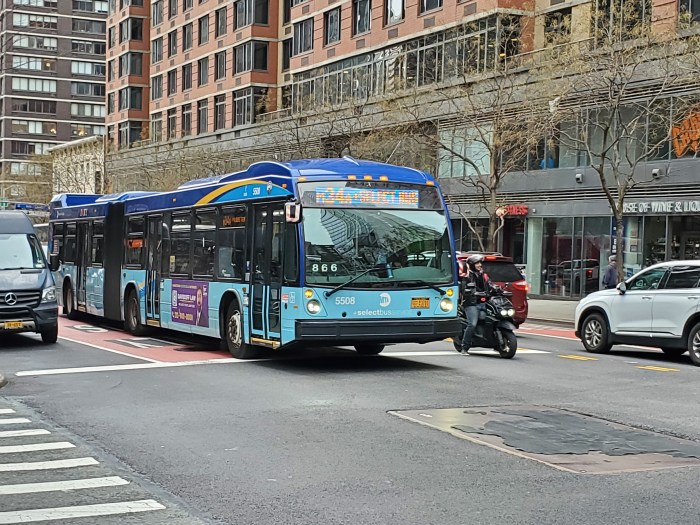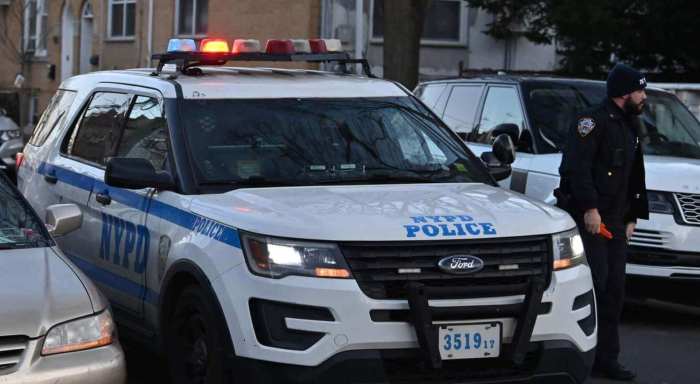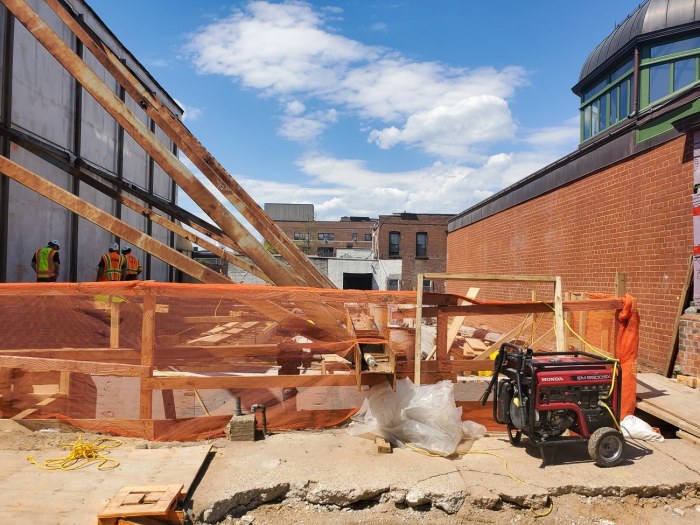
A Long Island Rail Road train hit a bumping block and derailed at Brooklyn’s Atlantic Terminal during the morning rush hour on Wednesday, injuring at least 104 people, authorities said.
The Far Rockaway train was carrying about 430 passengers when it crashed through the final bumper on Track 6 at the busy transit hub around 8:20 a.m., causing two of the six train cars to derail, the FDNY and the MTA said.
The train hit the wall of a waiting area, and a rail pierced the train, according to FDNY assistant chief Daniel F. Donaghue.
None of the injuries were life-threatening, the FDNY said. It’s not clear if all of the people hurt were passengers inside the train, fire officials said.
The injured were taken to Brooklyn Hospital Center, New York Methodist Hospital and Kings County Hospital Center.
MTA Chairman Thomas Prendergast said it was not immediately known how fast the train was going when it entered the terminal, but that the engineer was probably responsible for failing to stop the train before it hit the bumper.
“At that speed, it’s pretty much the locomotive engineer’s responsibility to stop the train,” Prendergast said.
An investigator with the National Transportation Safety Board, Jim Southworth, said the speed limit approaching the bumping block is 5 miles per hour.
The MTA is investigating what went wrong and why the operator did not stop the train before the bumping block. The Federal Railroad Administration and the NTSB also began separate investigations into the crash Wednesday, Southworth said.
The investigation will center on track conditions, train operations, mechanics, signal systems, human performance — including the 72-hour history of the operator — and event recorders, Southworth said.
“Our mission is to understand not just what happened, but why it happened,” Southworth said, adding he expects the NTSB to remain on the scene for three to seven days.
The locomotive engineer, the conductor and the brakeman will all be interviewed, Prendergast said.
NYPD Chief of Transit Joseph Fox said investigators are recovering the train’s so-called “black box” event recorder.
The LIRR tweeted that service was operating “on or close to schedule” at Atlantic Terminal at about 11:30 a.m. and there were no delays for the evening commute.
Daniela Roth of Valley Stream said she was sitting in the first car of the train when it derailed. “We started feeling the train jump the rail,” she said. “Then we heard the metal screeching, and it felt like it was forever. And then we saw the smoke.”
Roth said passengers “were catapulted,” which caused anyone standing to fall. She described the front of the train as appearing crushed.
Another passenger, Wendy Gerzog, 57 of Lawrence, said “there was smoke all over,” but she didn’t know where it was coming from.
Gerzog suffered some contusions, but said she was OK.
“We’re New Yorkers,” she said. “We manage.”
Gov. Andrew M. Cuomo praised the “fantastic” emergency response to the incident and said the accident was “minor” compared to the NJ Transit derailment in Hoboken, New Jersey, back in September, which killed one person and injured more than 100.
The Long Island Rail Road is the United States’ largest commuter rail system, serving more than 330,000 passengers a day, according to the American Public Transportation Association.
Less than three months ago, on Oct. 8, a LIRR passenger train hit a work train and then derailed near Nassau County’s New Hyde Park neighborhood, injuring 33 people and prompting days of service disruptions.
Data from the Federal Railroad Administration shows there were eight fatalities and 418 injuries related to LIRR train crashes in 2016. That number, which includes crashes involving vehicles and individuals on the train tracks, is down from 12 fatalities in 2015.
With Ivan Pereira, Lauren Cook and Newsday

















